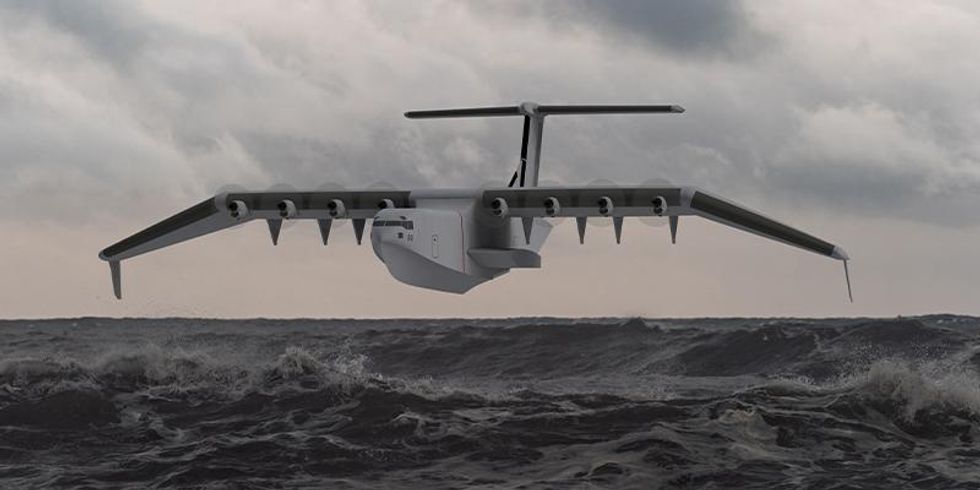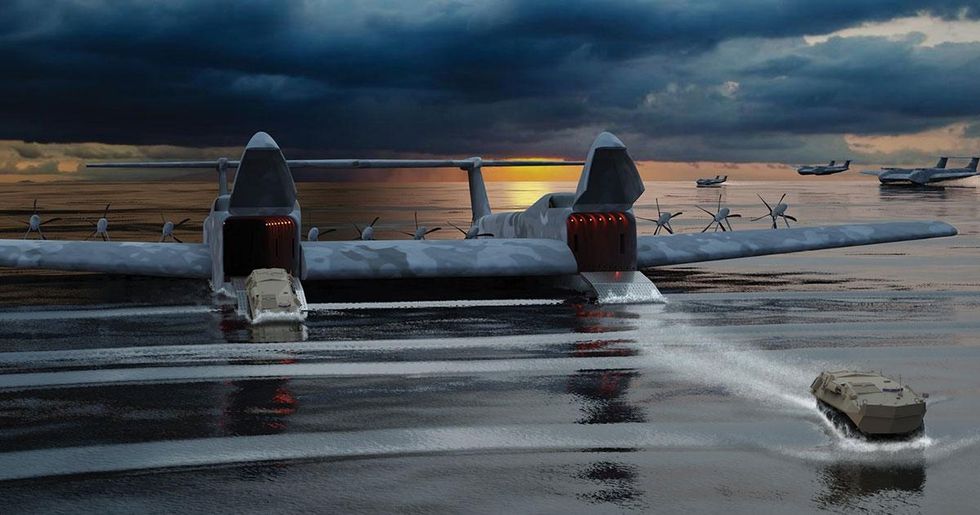Two Companies Working Toward Full-Scale Liberty Lifter X-Plane

In May 2022, DARPA announced a program to develop a brand new X-plane. Called Liberty Lifter, the X-plane is a massive cargo seaplane that leverages ground effect to fly long distances efficiently by skimming over the surface of the sea. DARPA is of course well known for having lots of crazy ideas, only some of which ever come to fruition. But excitingly, two major aerospace companies have now signed on with their own designs for Liberty Lifter, meaning that a new full-scale X-plane may actually happen in the near future.
The concept behind Liberty Lifter is to create a sort of hybrid delivery system that combines the speed of airlift with the efficiency of sealift. While Liberty Lifter will be able to fly at altitude like a normal seaplane, cruising just tens of meters above the waves (where the pressure under the wings against the water's surface adds lift) could boost the aircraft's effective range by 50 percent. The name Liberty Lifter" invokes the idea of Liberty ships, reflecting DARPA's goal of an aircraft that's relatively easy and cheap to put together.
The two companies currently funded by DARPA for the design phase of the Liberty Lifter program are Aurora Flight Sciences (part of Boeing) and General Atomics.
We are excited to kick off this program and looking forward to working closely with both performer teams as they mature their point-of-departure design concepts through Phase 1," said DARPA Liberty Lifter Program Manager Christopher Kent. The two teams have taken distinctly different design approaches that will enable us to explore a relatively large design space during Phase 1."
There isn't a lot of technical detail on the designs available yet, but the renderings are pretty cool:
 Aurora Flight Sciences
Aurora Flight Sciences
Aurora's design is a traditional-ish looking big seaplane, using eight turboprops and a high wing. General Atomics is looking at something a bit more adventurous:
 General Atomics
General Atomics
This twin-hull, low-wing design with 12 turboshaft engines is more like DARPA's original concepts and is optimized for on-water stability and seakeeping. But neither of these concept images communicates much about the efficiency of the craft's construction process, which will likely be a significant factor in DARPA's decision about which design gets to move forward.
DARPA expects the conceptual work on these designs to take about six months, followed by nine months of design maturation and a preliminary design review. After that, three months spent on manufacturing planning and test/demonstration planning reviews" will give the agency the info that it needs to transition one design into Phase 2 of the program, with the goal of building a full-scale Liberty Lifter X-plane starting in mid-2024.